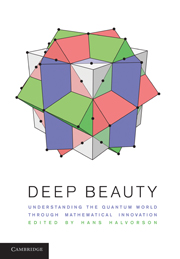Book contents
- Frontmatter
- Contents
- Contributors
- Preface
- Acknowledgments
- Introduction
- I Beyond the Hilbert Space Formalism: Category Theory
- II Beyond the Hilbert Space Formalism: Operator Algebras
- III Behind the Hilbert Space Formalism
- 9 Quantum Theory and Beyond: Is Entanglement Special?
- 10 Is Von Neumann's “No Hidden Variables” Proof Silly?
- 11 Foliable Operational Structures for General Probabilistic Theories
- 12 The Strong Free Will Theorem
- Index
10 - Is Von Neumann's “No Hidden Variables” Proof Silly?
from III - Behind the Hilbert Space Formalism
Published online by Cambridge University Press: 01 June 2011
- Frontmatter
- Contents
- Contributors
- Preface
- Acknowledgments
- Introduction
- I Beyond the Hilbert Space Formalism: Category Theory
- II Beyond the Hilbert Space Formalism: Operator Algebras
- III Behind the Hilbert Space Formalism
- 9 Quantum Theory and Beyond: Is Entanglement Special?
- 10 Is Von Neumann's “No Hidden Variables” Proof Silly?
- 11 Foliable Operational Structures for General Probabilistic Theories
- 12 The Strong Free Will Theorem
- Index
Summary
Introduction
In his Mathematical Foundations of Quantum Mechanics, John von Neumann presented a proof that the quantum statistics cannot be recovered from probability distributions over “hidden” deterministic states that assign definite premeasurement values to all physical quantities. Von Neumann's proof has been dismissed as “silly” by John Bell and by David Mermin, who writes:
Many generations of graduate students who might have been tempted to try to construct hidden-variables theories were beaten into submission by the claim that von Neumann, 1932, had proved that it could not be done. A few years later (see Jammer, 1974, p. 273) Grete Hermann, 1935, pointed out a glaring deficiency in the argument, but she seems to have been entirely ignored. Everybody continued to cite the von Neumann proof. A third of a century passed before John Bell, 1966, rediscovered the fact that von Neumann's nohidden-variables proof was based on an assumption that can only be described as silly—so silly, in fact, that one is led to wonder whether the proof was ever studied by either the students or those who appealed to it to rescue them from speculative adventures.
- Type
- Chapter
- Information
- Deep BeautyUnderstanding the Quantum World through Mathematical Innovation, pp. 393 - 408Publisher: Cambridge University PressPrint publication year: 2011
- 5
- Cited by



